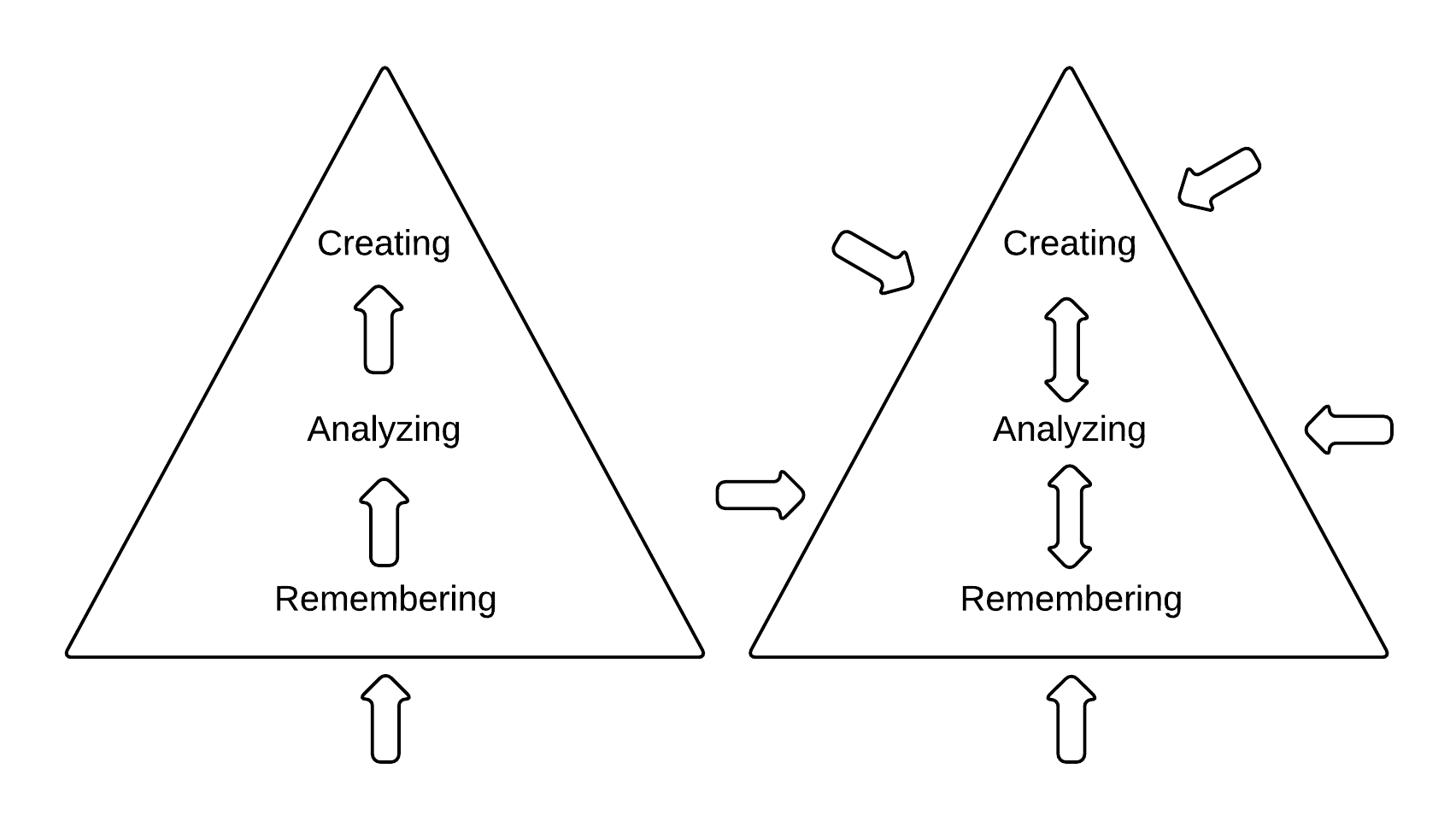 Bloom’s taxonomy has been a staple of educational theory for decades. Most educators first encounter the concept during their undergraduate preparation, and it is used as a model to ensure learning objectives are expressed in terms that encourage more sophisticated types of understanding.
Bloom’s taxonomy has been a staple of educational theory for decades. Most educators first encounter the concept during their undergraduate preparation, and it is used as a model to ensure learning objectives are expressed in terms that encourage more sophisticated types of understanding.
While Bloom originally used the image to the right to capture the concept, it is typically illustrated as pyramid With “remembering” at its base and “evaluating” at the apex. Bloom’s taxonomy has been “revised” to reflect more up-to -date verbs that can be used to define learning outcomes, and some like to place icons of web 2.0 platforms on the pyramid to illustrate technologies that can be used to accomplish each level.
Implicit in the illustration of Bloom’s taxonomy as a pyramid is that “remembering” becomes the basis for all other activities, thus the way one enters a field of study is by first learning the basics of the field. It is reasoned that one must remember details and facts before one can begin to “understand,” “apply,” analyze,” “evaluate,” or “create.” Clearly, it is accurate to state as one becomes more expert in a field, one is more effective and efficient at those types of activities; but to conclude there is only only path through Bloom’s taxonomy–starting through the bottom and proceeding through each in order–is not reasonable.
My objections to grounding teaching and learning in the “basics” first and then proceeding are two-fold. First, we know that learners are motivated to learning only that which they deem relevant. If the basics that must be remembered are presented devoid of connections to problems that students deems to be relevant and interesting, then the facts may be recalled for a test, but they will not be retained to be accessible when the teachers finally opens the higher levels of Bloom. This explains that common response I hear from teachers, “I would get to higher thinking, but we need to get through the basics first, and they don’t remember anything.”
Second; the problems, activities, and ideas one encounters when engaged in Bloom’s higher order thinking can introduce relevance to the basics and can provide organizing scaffolds that help students connect and remember the basics. Imagine a biology teacher whose students are going to study cell theory. Traditionally, that teacher would begin with the organelles and their functions, and once those where remembered by students, they would proceed to look at differences in cells found within organs and systems. (Of course, there would likely be little time for that as it would be necessary to understand the basics facts of the organs before the students would be allowed to understand the cells within each.)
If the teacher were to begins study of cells with simple idea: “Organs do perform different functions, and they have different types of cells to accomplish those functions,” then they would be entering the field of cell theory at (perhaps) “applying” and their expertise would grow as they moved up and down through the levels of to add support and detail to explain the idea. I propose, therefore that educators recognize that Bloom’s taxonomy does not imply a pathway. Bloom’s taxonomy, and the verbs associated with its levels, can identify points of entry into fields and teaching and learning is nonlinear within this pyramid.
